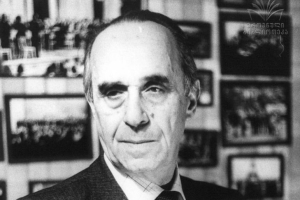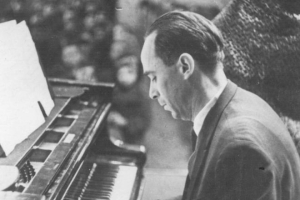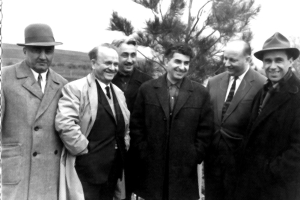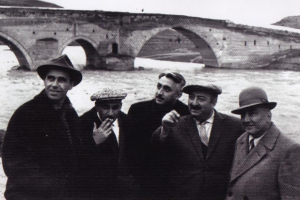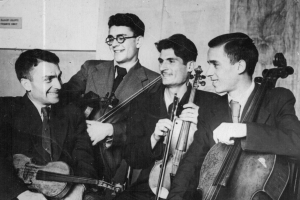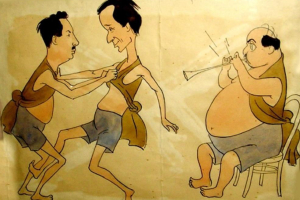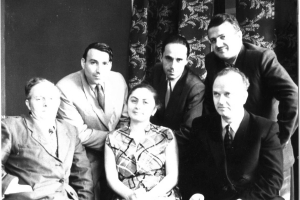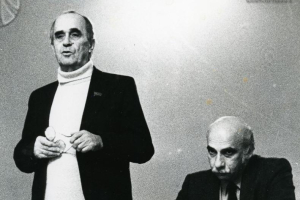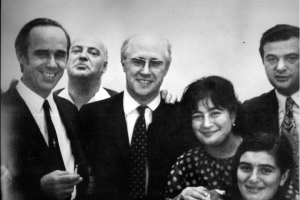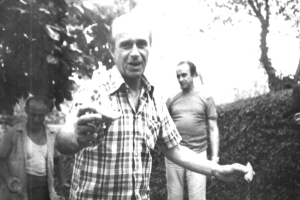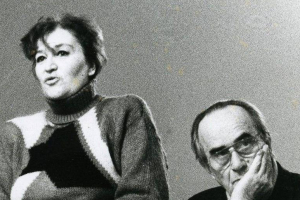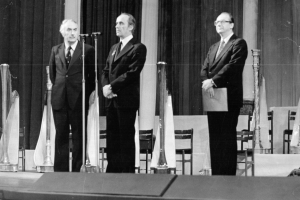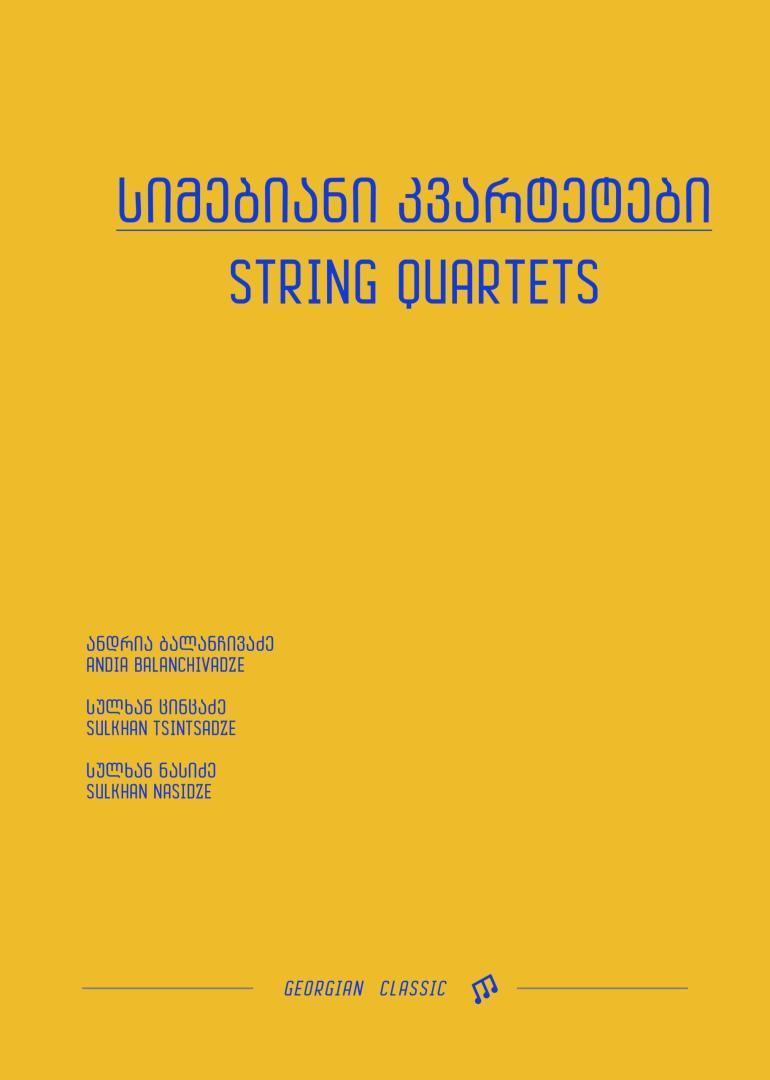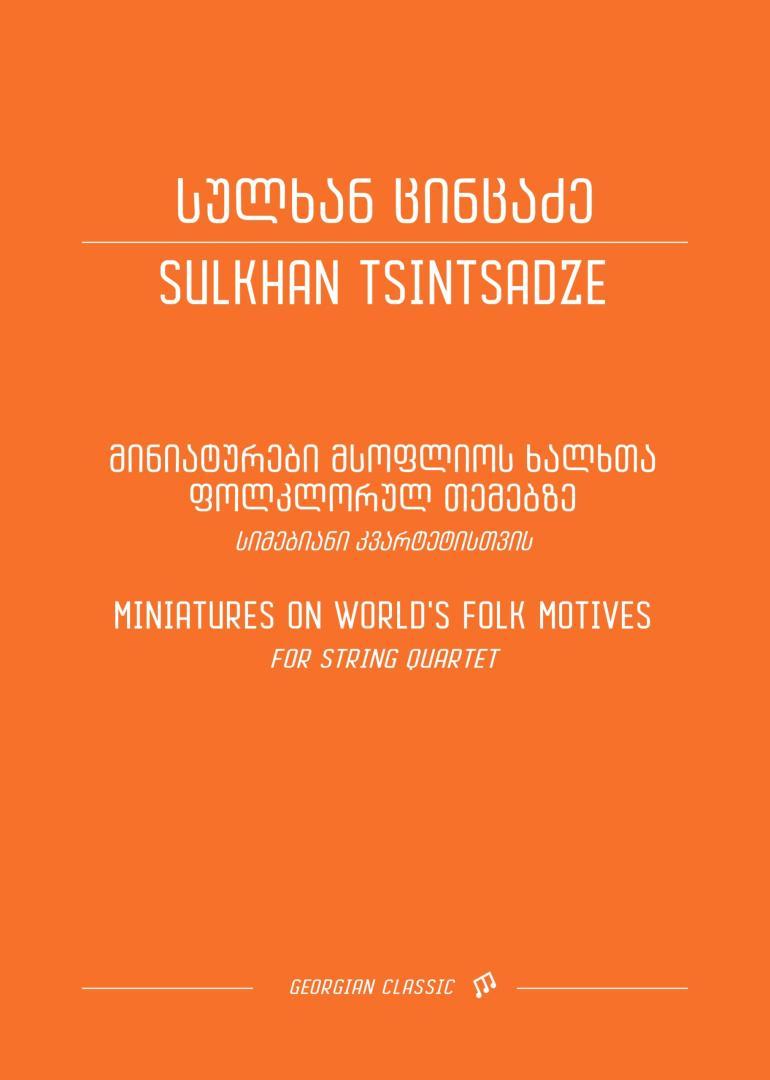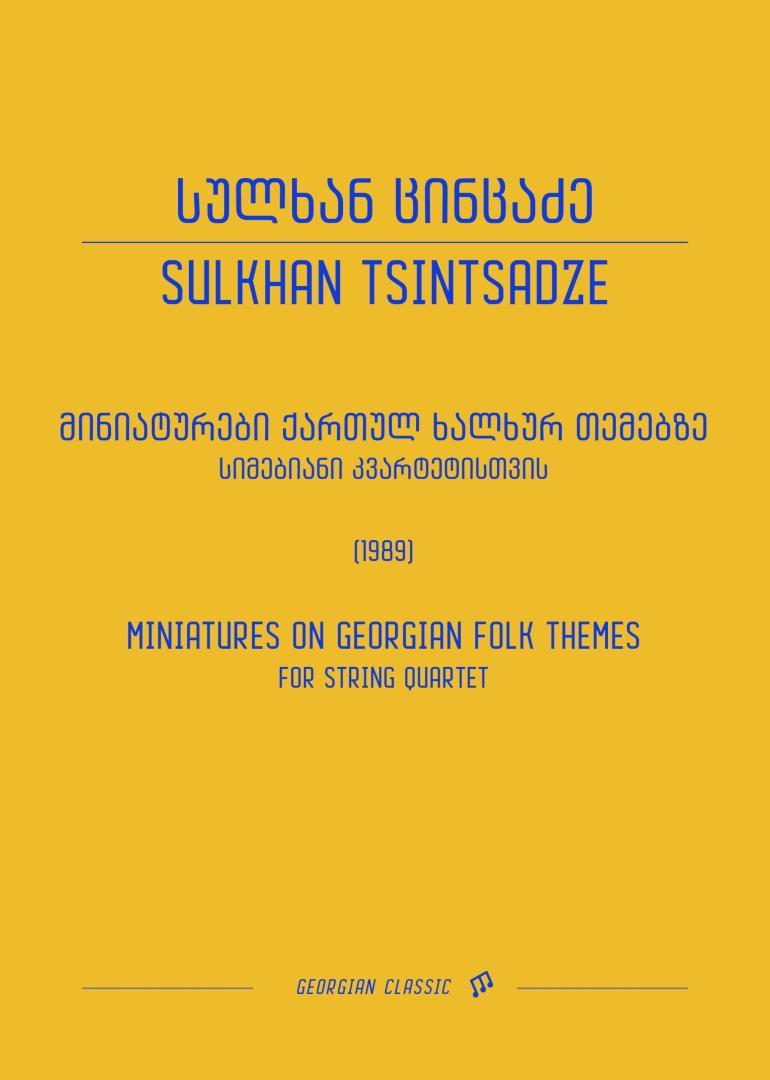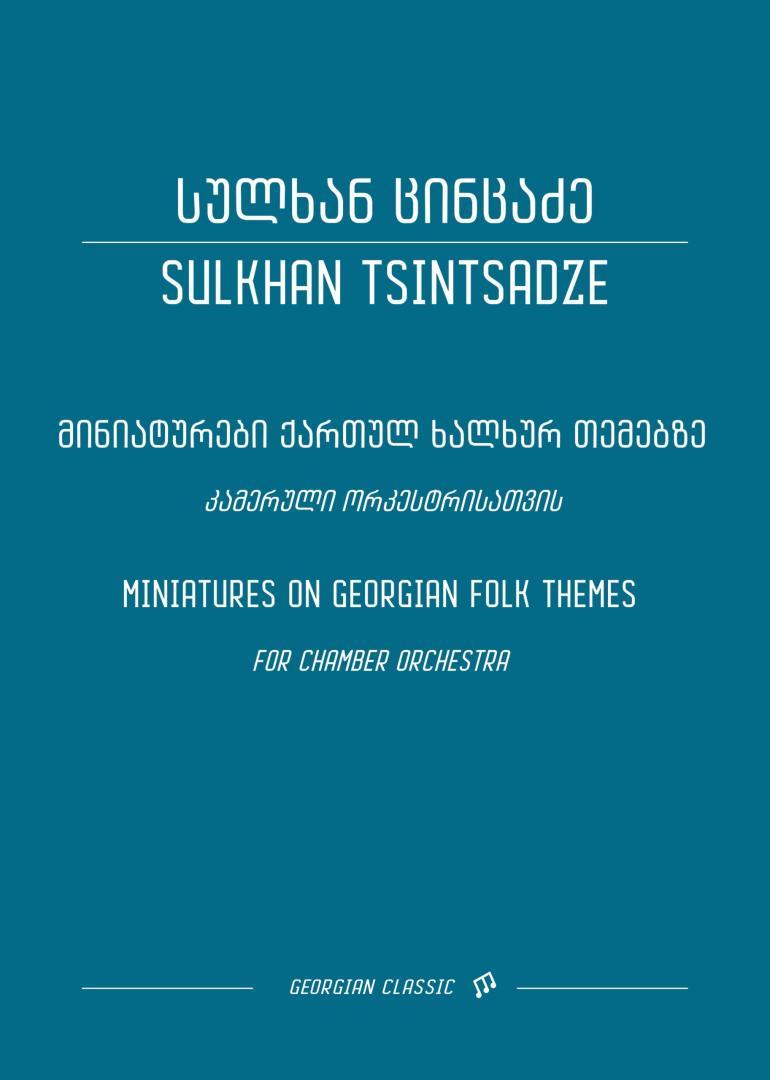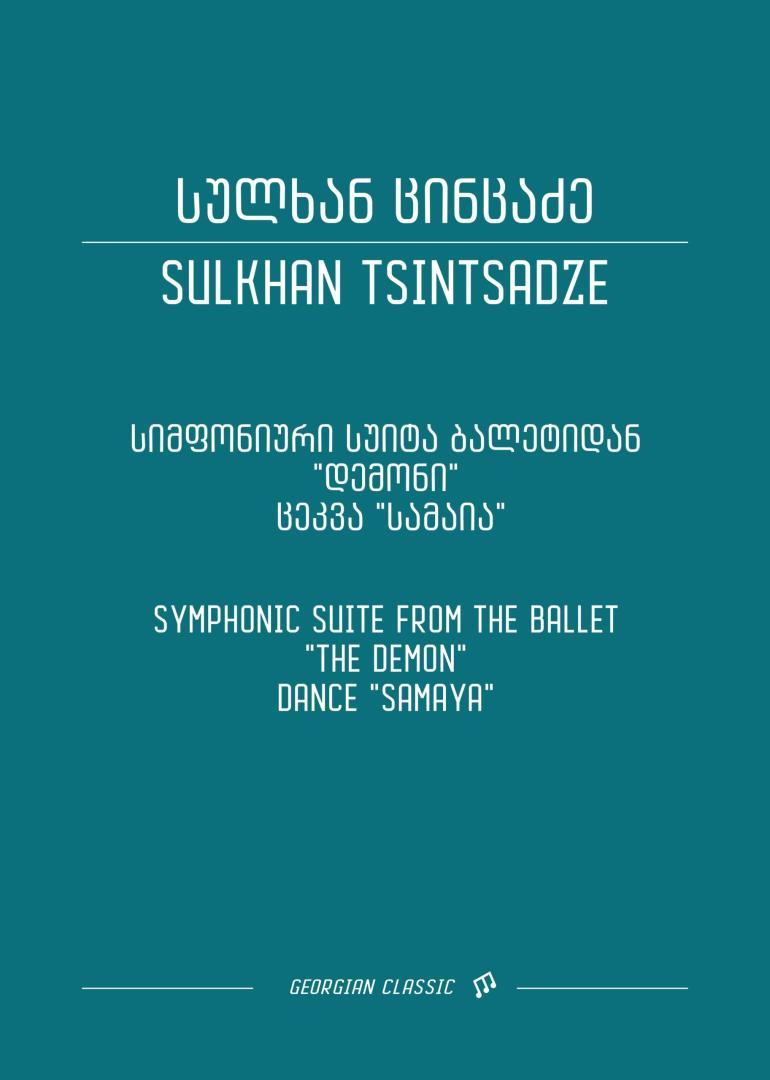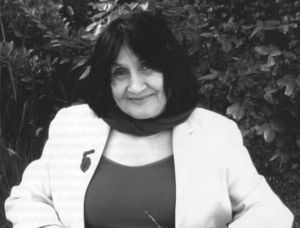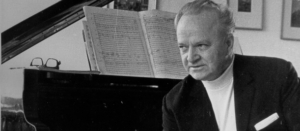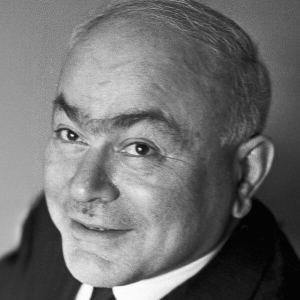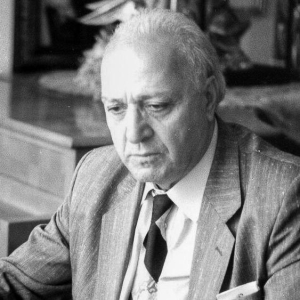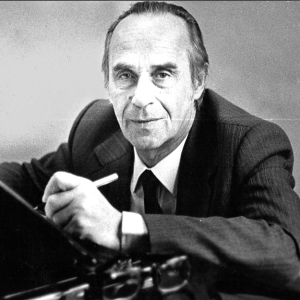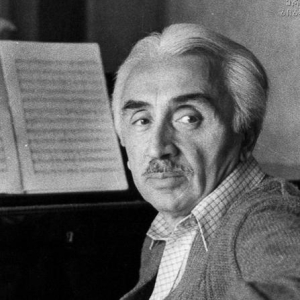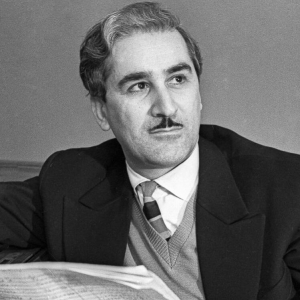Sulkhan
Tsintsadze
Sulkhan Tsintsadze
(1925 – 1991)
Tsintsadze Sulkhan, Georgian Composer and Teacher, Professor. A prominent representative of the Georgian school of composition, whose work was immediately recognized as a find of Georgian national musical culture. Rector of Tbilisi State Conservatory (1965 – 1984), People’s Artist of the Soviet Union and Georgia, Sh. Rustaveli and USSR State Prize laureate.
Date of birth – August 23, 1925
Place of birth – city of Gori, Georgia
Date of death – September 15, 1991
Place of death – Tbilisi, Georgia
He is buried in Didube Pantheon of Writers and Public Figures – Tbilisi
BIOGRAPHICAL DATA
1950 – Graduated from P. Tchaikovsky Moscow State Conservatory (cello class – teacher: S. Kozolupov)
1953 – Graduated from P. Tchaikovsky Moscow State Conservatory (composition – S. Bogatirov)
1942 – 1944 – Artist of the State Symphony Orchestra of Georgia;
1944 – 1946 – Soloist of the Georgian State Philharmonic String Quartet;
Since 1963 – Teacher of the Tbilisi State Conservatory named after Vano Sarajishvili;
Since 1973 – Professor of Vano Sarajishvili Tbilisi State Conservatory;
1965–1984 – Rector of Vano Sarajishvili Tbilisi State Conservatory;
AWARDS AND RECOGNITION
Laureate of Moscow International Festival, Prague International Festival and Warsaw International Festival
1966 New England Academy of Music, Honorary Member
1949 – Union of Composers of the Soviet Union, member
1968 – Member of the Board of the Union of Composers of the Soviet Union
1979 – Union of Composers of Georgia, Chairman
1956 – Member of the Board of the Union of Composers of Georgia
Supreme Council of the XI Convocation of the Georgian SSR, deputy
1950 – State Prize of the Soviet Union (Stalin Prize)
1958 – Order of the Red Banner of Labor
1961 – People’s Artist of Georgia
1974 – Zakaria Paliashvili prize
1981 – Shota Rustaveli State Prize
1984 – Five–year record award
1987 – People’s Artist of the Soviet Union
Member of the jury of not one international competition. between them:
1969 – Rs. Schuman International Competition
1970, 1979 – P. Tchaikovsky International Competition
1975 – B. Bartok International Competition
Sulkhan Tsintsadze
(1925 – 1991)
SELECTED WORKS
MUSIC FOR THE THEATER
1945 – “The Golden Fleece” – Opera in 3 Acts – (libretto – G. Gelovani, P. Gruzinski)
1945 – “Gandegili” (“Hermit “) – Opera in One Act – (libretto – S. Tsintsadze)
1958 – “Demon” – Ballet in 3 Acts – (libretto – V. Chabukiani)
1963 – “Poem” – Ballet in One Act – (libretto – A. Chichinadze)
1974 – “Antique sketches” – Ballet in One Act and 6 Scenes – “Narcissus”, “Pan and Syringa”, “Polyphemus and Galaea”, “Hephaestus”, “Zeus and Europa”, “Nadim of Dionysus” – (libretto – G. Aleksidze)
1977 – “Dali And The Hunter” – Ballet in 2 Acts – (libretto – G. Aleksidze)
1982 – “Rivers” – Ballet in 2 Acts – (libretto – A. Chichinadze, A. Nikolaev)
1979 – “Rivares” – Film-Ballet – director – Bidzina Chkheidze
1960 – “Ablabuda” (“Web”) – Operetta in 3 Acts – (Libretto – P. Gruzinski)
1968 – “Song In The Forest” – Operetta in 3 Acts – (Libretto – L. Chubabria)
1976 – “Shveik, Sveik, Sveik” – Musical Comedy in 2 Acts – (Libretto – B. Ratzer)
ORCHESTRAL MUSIC
1952 – Symphony N 1
1962 – Symphony N 2
1969 – Symphony N 3
1978 – Symphony N 4 “Reminiscences”
1985 – Symphony N5
1960 – Suite from the Ballet “Demon” – for Symphonic Orchestra
1976 – Suite from the Ballet “Antique Sketches” – for Symphonic Orchestra
1979 – Suite from the Ballet “Rivares” – for Symphonic Orchestra
1978 – “Fantasia” – for String Quartet and Chamber Orchestra
1947 – Concerto for Cello and Symphonic Orchestra N 1
1960 – Concerto for Cello and Symphonic Orchestra N 2
1964 – Concerto for Cello and Symphonic Orchestra N 3
1972 – Concertino for Cello and Chamber orchestra N 4
1952 – Concerto for Piano and Symphonic Orchestra N 1
1968 – Concerto for Piano and Symphonic Orchestra N 2 “Contrasts”
1954 – Fantasy for Piano and Symphonic Orchestra
1954 – Concertino for Piano and Symphonic Orchestra
1947 – Concerto for Violin and Symphonic Orchestra N 1
1968 – Concerto for Violin and Symphonic Orchestra N 2
1956 – “Georgian Rhapsody” – Violin and Symphonic Orchestra
1986 – 24 Preludes – for Solo Violin and Chamber Orchestra
CHAMBER-INSTRUMENTAL MUSIC
1947 – 1991 – 12 String Quartet
1949 – Suite N 1 – for String Quartet
1950 – Suite N 2 – for String Quartet
1955 – Suite N 3 – for String Quartet
1945 – 1991 – Miniatures for String Quartet
- Miniatures on Georgian Folk Themes (21 Miniatures)
- Miniatures on Jewish Folk Themes (5 Miniatures)
- Miniatures on the Themes of Peoples of the World (6 Miniatures)
- Miniatures on Georgian Topics (8 Miniatures)
1971 – 24 Preludes for Piano
1980 – 24 Preludes for Cello
1948 – 2 Pieces for Solo Viola
1949 – “Khorumi” – for Viola and Piano
1949 – “Melody” – for Violin and Piano
1950 – 5 Pieces – for Cello and Piano
1966 – “Poem” – for Violin and Piano
1976 – Sonata – for Solo Cello
VOCAL-INSTRUMENTAL MUSIC
1949 – Cantata for Tenor, Mixed Choir and Symphonic Orchestra – (text – I. Snegova, T. Nikolaevskaya)
1957 – “Farewell Song” – Cantata for Soloists, Choir and Symphonic Orchestra – (text – P. Gruzinski)
1976 – “Way of Glory” – Cantata for Soloists, Chorus and Symphonic Orchestra – (text – P. Gruzinski)
1969 – “Immortality” – Oratorio for Soprano, Chorus and Symphonic Orchestra
1974 – 5 romances – for Voice and Piano – (text – P. Gruzinski)
1984 – “The Undertaker” – for Bass and Piano – (text – G. Tabidze)
FILM AND THEATER MUSIC
MUSIC FOR THE THEATER
THE AUTHOR OF MUSIC FOR MORE THAN 40 PLAYS. BETWEEN THEM:
“Don Cesar de Bazan”, “The Spanish Priest”, “Typhoon”, “The Merchant of Venice”, “The Seagull”…
FILMOGRAPHY
1954 – “Dragonfly” – director – Levan Khotivari, Simon (Siko) Dolidze
1956 – “Bashi-Achuk” – director – Leo Esakia
1956 – “Abezara” – director – Nikoloz Sanishvili
1956 – “Shadow on the Road” – director – – David Rondel
1957 – “Otaraant’s Widow” – director – Mikheil Chiaureli
1957 – “Woman’s Burden” – director – Nikoloz Sanishvili
1960 – “Dawn” – director – Karaman (Guguli) Mgeladze
1961 – “Treasure” – director – Rezo Chkheidze
1962 – “Sea Trail” – director – Rezo Chkheidze
1962 – “Dolls are laughing” – director – Nikoloz Sanishvili
1962 – “Mole” – director – Shalva Martashvili
1964 – “Soldier’s father” – director – Rezo Chkheidze
1969 – “Smile Boys” – director – Rezo Chkheidze
1973 – “Levan Khidasheli” – director – Vakhtang Tabliashvili
1975 – “Bird’s milk” – director – Nikoloz Sanishvili
1983 – “Magic Night” – director – Temur Palavandishvili
1987 – “Rivares” – film-ballet – director – Bidzina Chkheidze
ANIMATION
1953 – “Otter Chuka” – director – Arkady Khintibidze
1954 – “Niko and Nikora” – director – Arkady Khintibidze
Sulkhan Tsintsadze
(1925 – 1991)
“Georgian music has reached important progress, due to Sulkhan Tsintsadze’s creative achievements.” – wrote Alex Machavariani, the composer. Sulkhan Tsintsadze is one of the composers who has successfully created Georgian professional music as a part of global musical processes. The composer worked in almost every genre of classical music, but quartet music became his main sphere of interest. He said a new word in Georgian and global music in general with his quartet creations. The composer worked in almost every genre of classical music, but quartet music became his main sphere of interest. He brought out a new word in Georgian and music in general with his quartet creations. He was only 22 years old when created three quartet miniature (1947). The transformation of the folk beginning into a quartet nuance, the endless imagination, the tonal qualities and the harmonious tendencies are captivated. Quartet miniatures have been based on folk song and dance melodies since the composer wrote them over a long period of time. Five quartet suites were created from the most of the miniatures. These works, so called “musical pearls,” continue to amaze listeners today.
12-string quartet was composed by Sulkhan Tsintsadze. One of the first scholars of his works, musicologist Gulbat Toradze pointed out about composer’s musical pieces – it is big differences, both chronologically and artistically, between Tsintsadze’s first and last quartets, but they are linked by a” transparent “thread of creative evolution.”
The composer’s search for new ideas has been evident in his works since the 1950s. Example of this discovery is the 4th Quartet (1955). Since the 1960s, there has been a powerful artistic break. This was the start of a new way of thinking in Georgian culture at the time. Tsintsadze’s works from this period of time, reflected changes in Georgian professional music in general. From that point on, Tsintsadze is known as conceptual thinker. It’s important to underline that composer took into account creative achievements of the twentieth- century’s famous composers, especially Bella Bartok and Dmitry Shostakovich. For Tsintsadze, Bartok’s influence was manifested in his free attitude toward folk material. Tsintsadze’s creative thinking was clearly revealed in the 5th Quartet (1963). Here were reflected both the composer’s new outlook beliefs and creative processes. This composition also served as a warm-up for the 6th quartet. (1966). According to musicology, these works “strongly illustrate the transformation that happened in the spheres of Georgian art in the 1960s” like as – music, literature, film, and fine arts.
The composer’s last period, which belongs to the ’80s, was also fruitful in terms of his creative output. During this time, he composed the 10th Quartet, as well as the 11th and 12th Quartets (1984, 1986, 1991), one of the key pieces, “24 Preludes for the Violin and Chamber Orchestra” (1986), the vocal ballad “Mesaplave” (based on a poem by Galaktion Tabidze), and the 5th symphony. Georgian professional music is represented by Tsintsadze’s instrumental pieces like as: Tsintsadze’s instrumental concerts represent Georgian professional music: 3 cellos (1947, 1964, 1972), 2 piano-forte conc. (1949, 1968), violin (1968, 1977), 24 preludes for piano- forte (1971), (1980). Sulkhan Tsintsadze’s work in the field of operetta is significant. His ballets are also worth mentioning – “Demon” (1961), “Ancient Sketches” (1973), “Dali and the Hunter” (1977), “Rivares” (1982), and others. Tsintsadze wrote two operas: “Golden Fleece” (1952) and “Gandegili” (1954). (1972). Five symphonies have been written by the composer as well. (1952- 85). The composer became well-known for his work on motion pictures such as “Dragonfly” (1954), “Bashi-Achuk” (1956), “Abezara” (1956), “Tojinebi icinian” “Dolls Laughing” (1964), and others. His cinema music discovered new life on the concert stage, and his melody is also played in orchestral music (in Zurab Nadareishvili’s symphonic works). Nowadays, Sulkhan Tsintsadze’s works are worldwide image of the Georgian professional music.
Musicologist
Tamar Tsulukidze
English Language Translator
Tamar Kharadze



